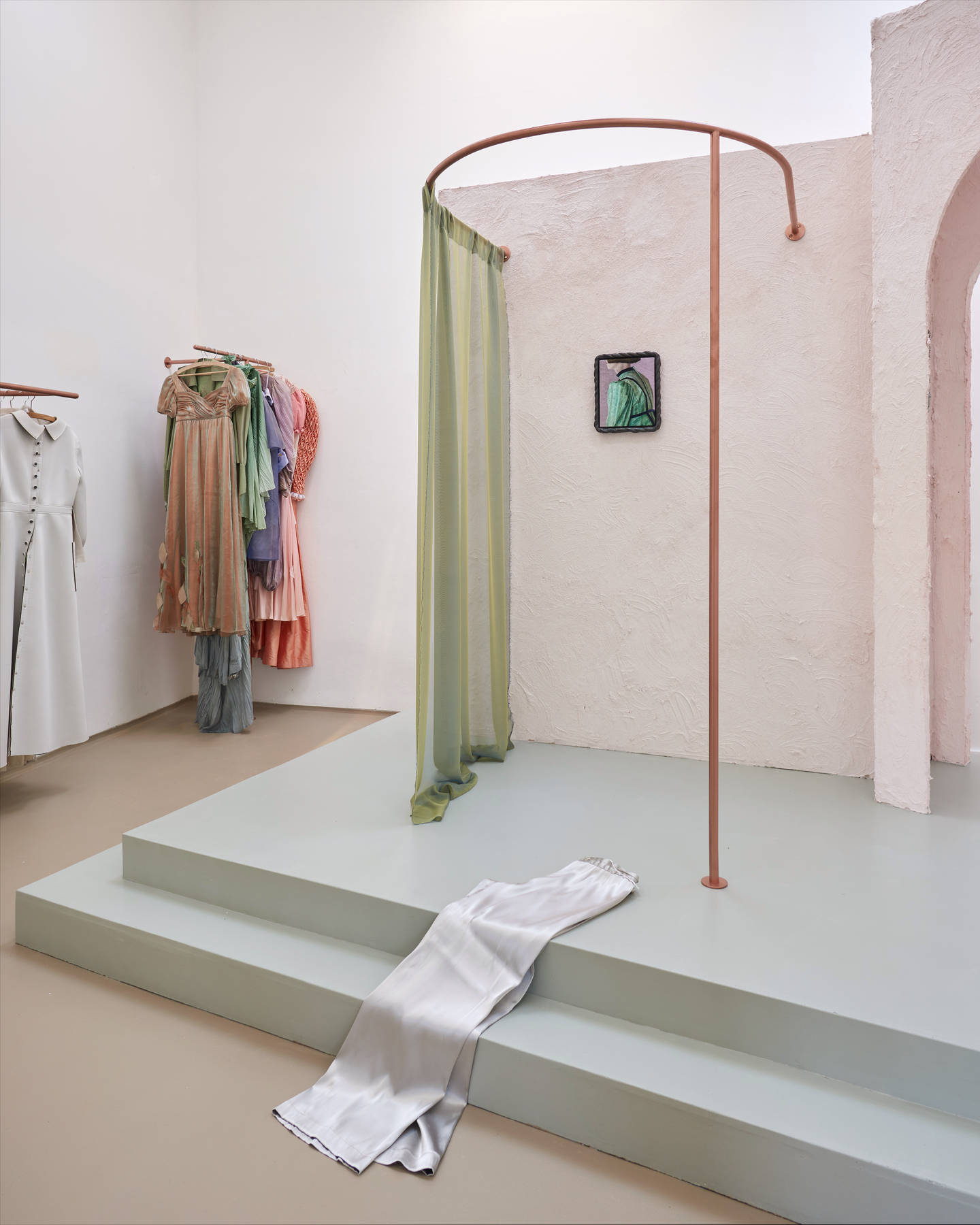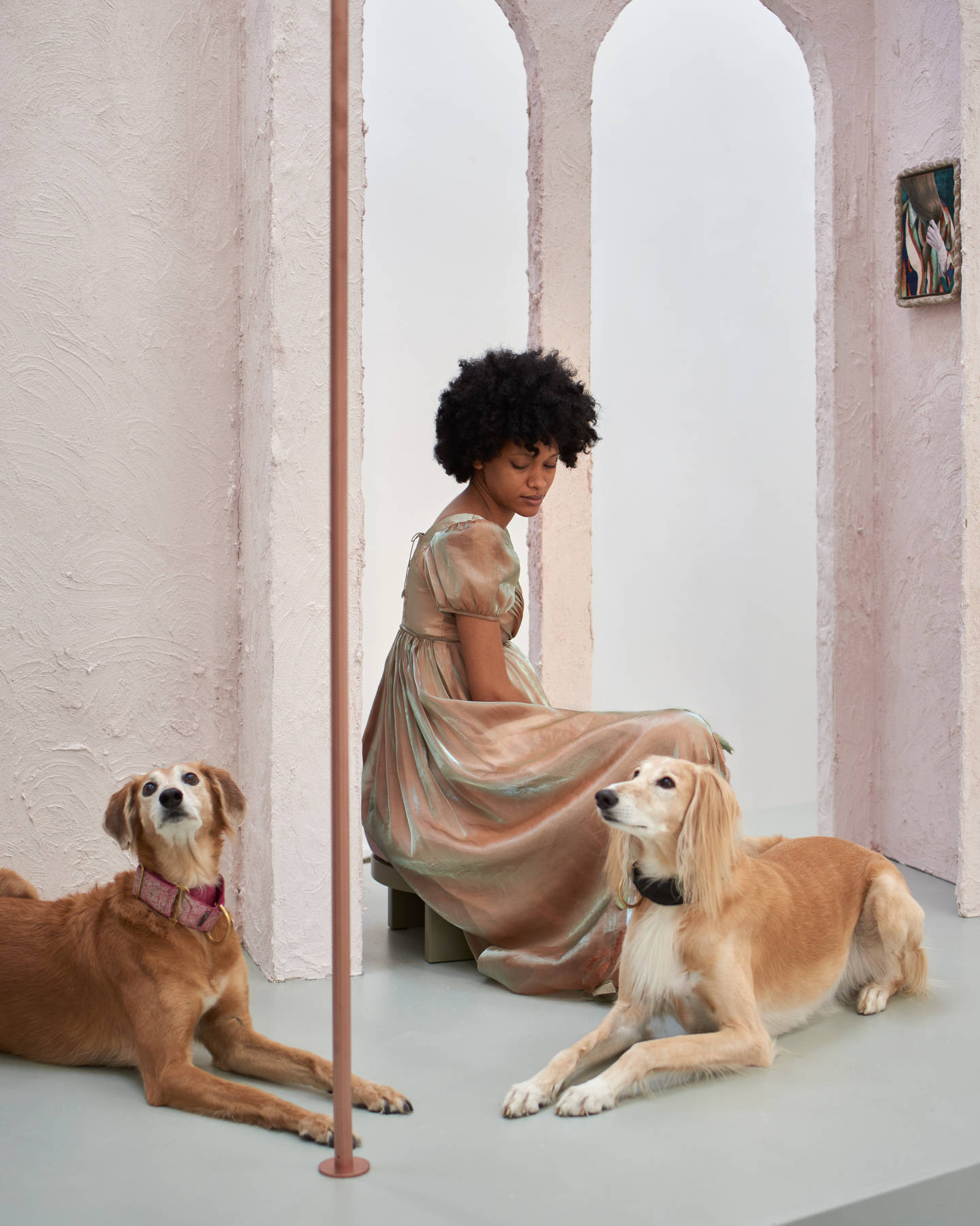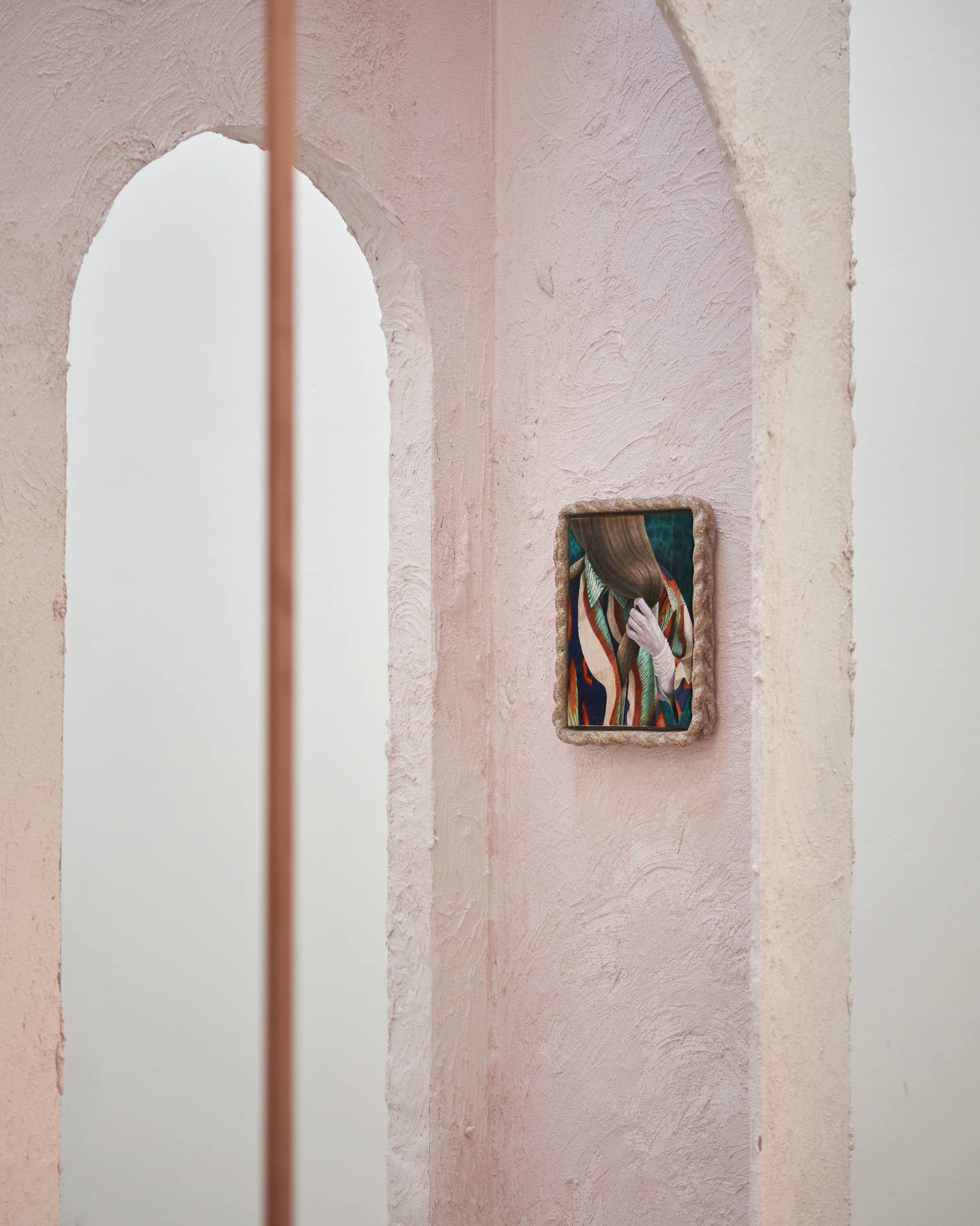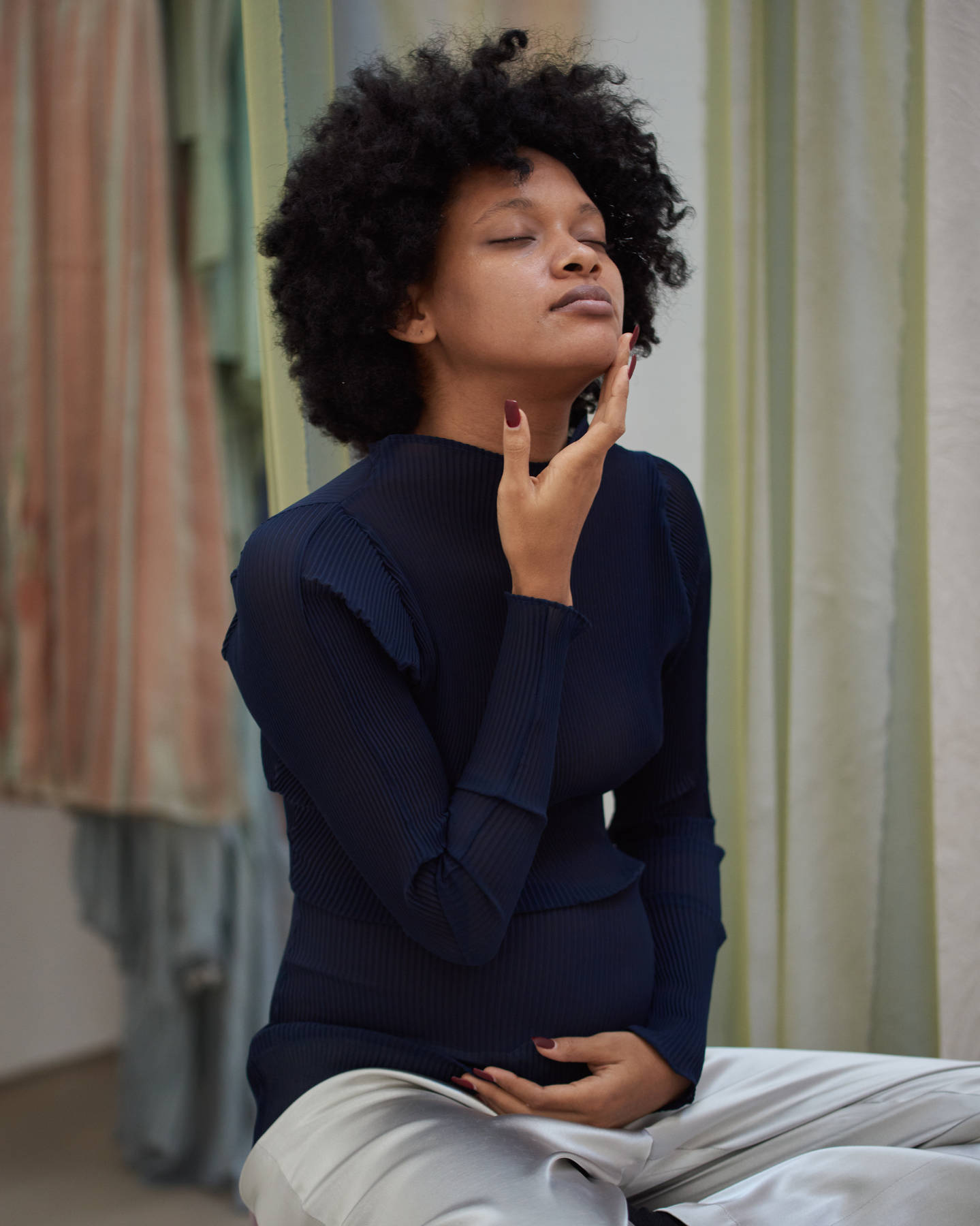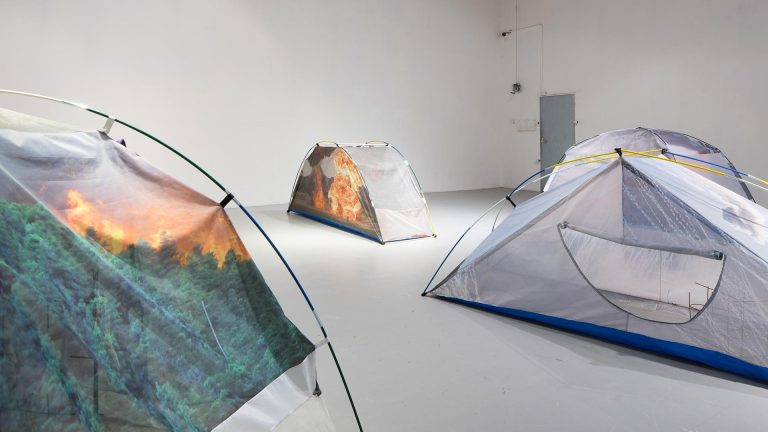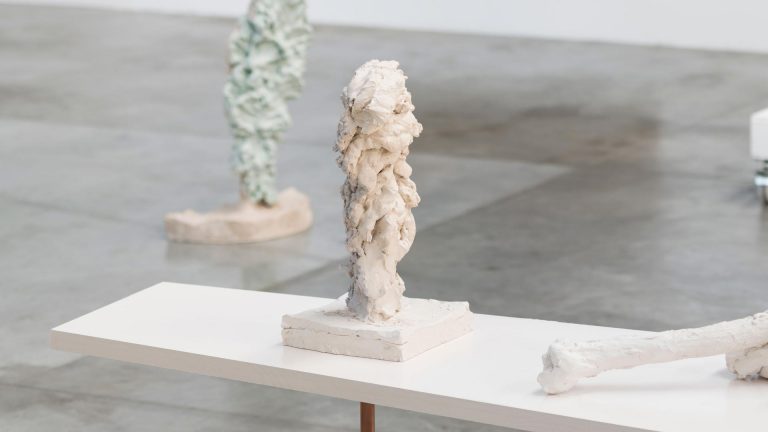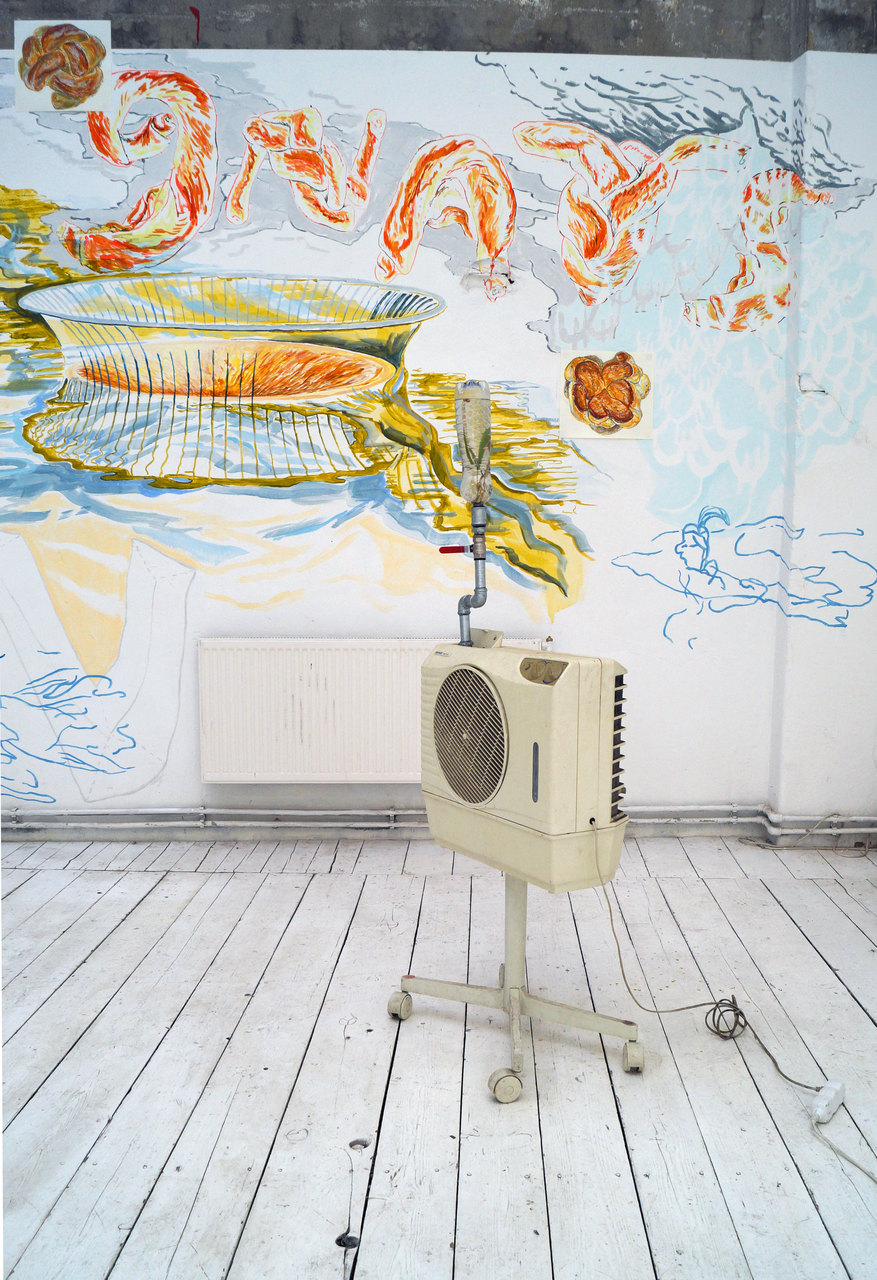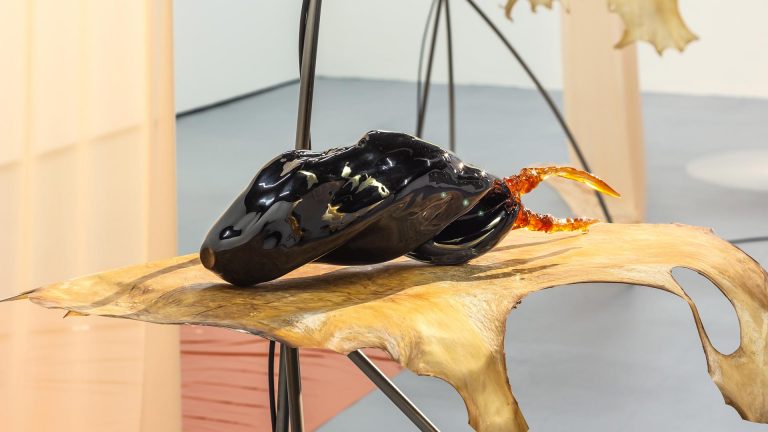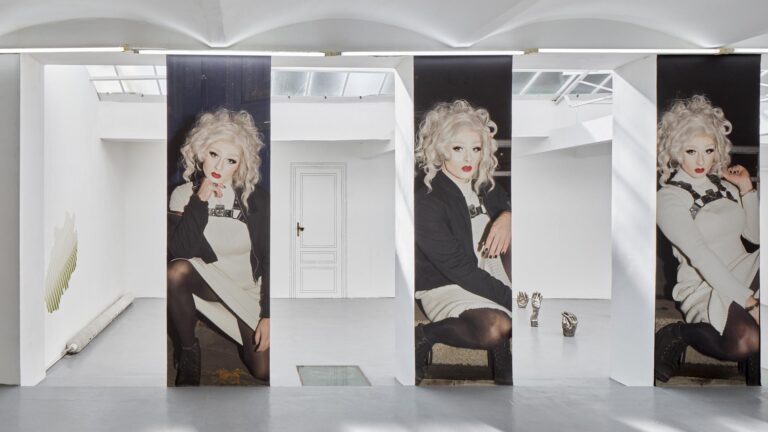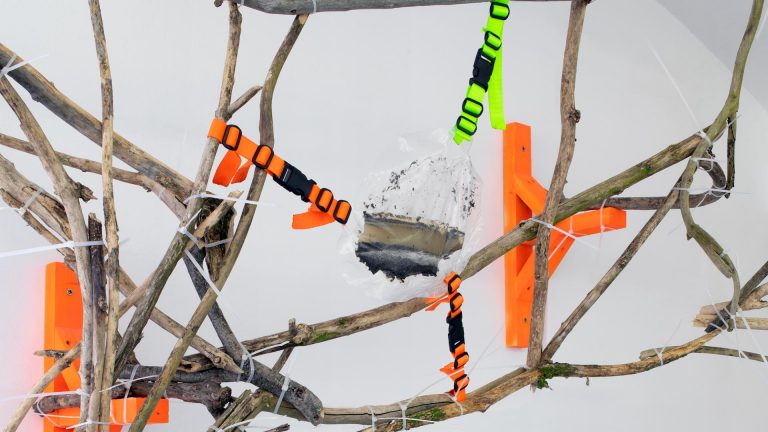Artist: Klára Hosnedlová
Exhibition title: Seated Woman
Curated by: Caroline Krzyszton
Venue: Karlin Studios, Prague, The Czech Republic
Date: December 7, 2018 – January 27, 2019
Photography: all images copyright and courtesy of the artist and Karlin Studios, Prague
Seated Woman is the continuation of Ponytail Parlour, a site specific project, which Klára Hosnedlová created at the New Scene of the National Theater in Prague in August 2018.
In the first part of the project, the artist transformed the existing cloackroom of the building of New Scene into an installation inspired by historical and civil costumes borrowed from the archive of the National Theater and punctuated by scenography elements (mirrors, seats…). The stage was devoted to an encounter with the performers. Young and ethereal women with coloured nails would walk in the space and interact with each other through simple, ordinary gestures thus performed with an ostentatious pleasure to feel and embrace the other’s presence: the affective figures brush each other’s hair as we would fantasize a renaissance boudoir or as orientalism may have imagined women proximity in exotic harems.
At Karlin Studios, Klára Hosnedlová inverted the process: in the empty gallery, the artist built her own scenography, inspired by an historical stage design of the bedroom scene in Romeo and Juliet’s scenography at National Theater in 1924 (direction and stage: Karel Hugo Hilar). Arches on a podium to which, instead of the original bed, she added a cloackroom. By doing this, the artist replaces the actors dressing room in the center of the attention, choosing to show the audience backstage action rather than the play. Behind the transparent curtains, we imagine ordinary and intimate situations, changing of costumes, body warm-up, which we will, actually, never see.
Indeed, the other difference with Ponytail Parlour is that the performances staged in its scenography won’t happen in front of an audience. They will be, this time, kept for private sessions and documentation. Here the stage itself would evokes the bodies, the presence, the play, the movements, left to the imagination or memories of the viewer. Only one piece of garment seamed to have been left on the floor, as a false negligence of its author, as a staring point of fantasy.
The title of the exhibition, Seated Woman, also inspires the visitor to imagine the performance. Draped Seated Woman is a bronze sculpture by the British artist Henry Moore, depicting a female figure resting in a seated position, wearing a voluminous drapery emphasizing her female figure, but the facial features are abstracted and barely indefinite. The sculptor actually started to draw draperies after watching people in London subway, wrapped up in thick clothes protecting themselves from the wind. This ordinary scene, told through the prism of textile texture and gesture close-ups, is maybe the perfect point of encounter for the two artists’ practice: the appropriation of a daily routine aestheticised by its most gentle details.
-Caroline Krzyszton


